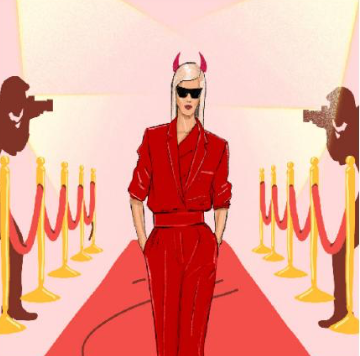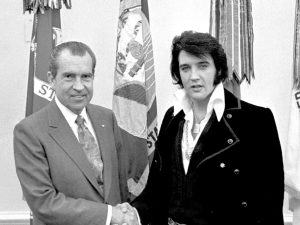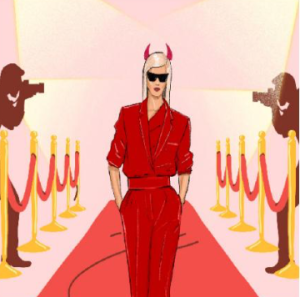Is Hollywood Demonic?
February 28, 2023
On February 5th, the 65th Grammy Awards took place, honoring many names within the music industry. Fans were greeted with many performances from their favorite artists, including some performances that should never have been seen. Sam Smith performed their newest hit, “Unholy,” with Kim Petras, where they were seen wearing a hat with devil horns while Petras danced in a cage highlighted by red lights. Regardless of Smith trying to lean into the title of their song, this seems to be a trend within Hollywood.
Over the years, many artists and actors have been reported as being a part of a cult or symbolizing satanism once they reach peak fame. Many artists, including (but not limited to) Beyoncé, Travis Scott, Doja Cat, Lil Nas X, Billie Eilish, Lady Gaga, Trippie Redd and so on have been reported to show satanic symbolism within their concerts, music videos and content put out on social media. Any person has freedom to believe what they want to believe. However, when a person is placed in a position of power and influence, how much is too much?
Lil Nas X won fame with his production of “Old Town Road” in 2019. After its roaring success, he began performing this hit to children, including a group of fifth graders from an Ohio elementary school. He even released a children’s book, “C is for Country,” leaning into his popularity within the younger community. In 2021, however, Lil Nas X released his hit “Montero (Call Me By Your Name)” accompanied by a music video where Lil Nas X demonstrates sexually explicit biblical and satanic imagery. After receiving heavy backlash for this video, Lil Nas X partnered with MSCHF, an American art collection, and released 666 pairs of his Satan shoes that had the Bible verse Luke 10:18, explaining Judas’s fall from heaven, and human blood within the red section of the shoe. Fans were outraged at this depiction of Satanism, as much of his audience consisted of children from his fame with “Old Town Road.” Did Lil Nas X go too far, or is this self-expression acceptable?
Many other artists have leaned into including satanic symbolism in their music videos. In her song “All the Good Girls Go to Hell,” Billie Eilish first appears wearing white angel wings in the beginning of the music video, but after falling to hell, her wings turn black, and her background dancers appear in the flames behind her. In her song “Hold Up,” Beyoncé shows a Bible sinking in water after singing lines about meeting the devil. This glamourization of hell has become a trend for artists, but how does it affect certain audiences?
I cannot speak to what someone should believe and what someone should not believe. Every person should have a right to their personal feelings and beliefs, but when you hold a position of power, I think that discretion is necessary. Some of these artists are idolized by younger generations and, rather than taking on their favorite popstar’s belief, children should have the right to be influenced by their families and own influences to form opinions. Moreover, when did it become a trend to include satanic symbolism in the music industry? Whether it is a rite of passage or an expression of personal beliefs, it is my opinion that artists should censor their content before allowing it to be seen by the public.







